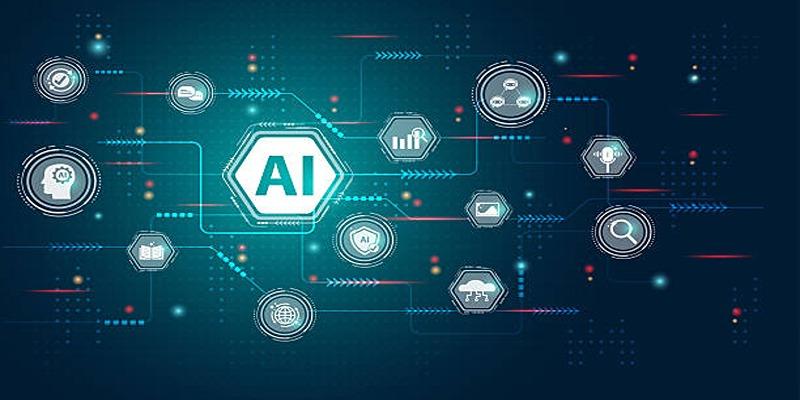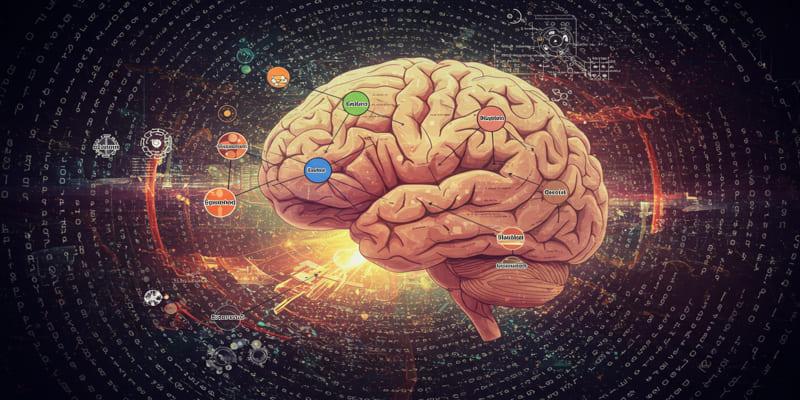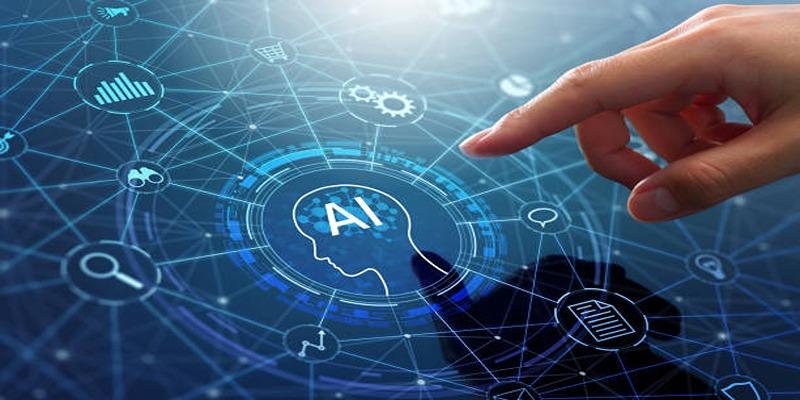Artificial intelligence, which was developed as a form of science fiction, has become a reality and is used to make financial, weather and other predictions. The ability to crunch large volumes of information and identify trends is an AI strong suit, which ranges from Netflix suggestion to credit risk assessment. Nevertheless, there are still its shortfalls. This guide discusses where the AI predictions are accurate, where they fail, and how we can ethically take advantage of all the possibilities they can offer.

AI agents make predictions through pattern recognition and statistical modeling. Machine learning algorithms analyze historical datasets to identify relationships between variables, then use these patterns to forecast future outcomes.
The most common approaches include supervised learning, where algorithms train on labeled data to predict specific outcomes, and unsupervised learning, which discovers hidden patterns in unlabeled datasets. Deep learning models, particularly neural networks, excel at finding complex, non-linear relationships that traditional statistical methods might miss.
Time series forecasting is a well-established use of predictive AI, analyzing sequential data to predict future trends in areas like finance, demand planning, and resource allocation. Advanced models, such as recurrent neural networks and transformers, excel at handling long sequences while preserving historical context. However, high-quality, relevant data is critical to ensure accurate predictions.
Certain domains play to AI's strengths, delivering predictions that consistently outperform human judgment or traditional statistical methods.
AI agents thrive in environments with clear, repeatable patterns. Weather forecasting exemplifies this strength—meteorological models process millions of data points from satellites, weather stations, and atmospheric sensors to predict conditions days in advance with remarkable accuracy. The European Centre for Medium-Range Weather Forecasts now provides reliable predictions up to 10 days out, a feat impossible without AI assistance.
Similarly, recommendation systems demonstrate AI's predictive prowess in understanding user behavior. Spotify's Discover Weekly playlist or Amazon's product recommendations leverage massive datasets to predict individual preferences with surprising precision.
Financial trading represents another area where AI predictions shine. Algorithmic trading systems analyze market data, news sentiment, and economic indicators to make split-second trading decisions. These systems can process information faster than human traders and identify subtle correlations across global markets.
Fraud detection systems also leverage AI's pattern recognition capabilities to predict suspicious activities. Credit card companies use machine learning models to flag potentially fraudulent transactions in real-time, analyzing spending patterns, merchant categories, and geographical data to protect consumers.
AI agents perform exceptionally well in closed systems with well-defined parameters. Game-playing AI like DeepMind's AlphaGo or OpenAI Five demonstrate this capability, making strategic predictions several moves ahead in complex scenarios.
Manufacturing and supply chain optimization benefit from similar advantages. AI systems can predict equipment failures by analyzing sensor data, preventing costly downtime through predictive maintenance schedules.
Despite impressive successes, AI agents face significant constraints that limit their predictive accuracy in many real-world scenarios.
AI systems struggle with rare, high-impact events that fall outside historical patterns. The 2008 financial crisis, and other "black swan" events demonstrate how unprecedented circumstances can render AI predictions useless or even counterproductive.
Most machine learning models assume future conditions will resemble past patterns. When this assumption breaks down, predictions become unreliable. AI systems trained on decades of market data failed to anticipate the unique economic disruptions caused by global lockdowns in 2020.
Predictive accuracy depends entirely on training data quality. Garbage in, garbage out remains a fundamental principle of AI systems. Historical data often contains biases that AI models perpetuate and amplify.
Facial recognition systems have demonstrated this problem dramatically, showing higher error rates for certain demographic groups due to biased training datasets. Similarly, hiring algorithms have been found to discriminate against qualified candidates when trained on historical hiring data that reflected past biases.
AI excels at identifying correlations but struggles with causation. A model might accurately predict that ice cream sales increase with drowning rates, but drawing the wrong causal conclusion could lead to disastrous policy decisions. The missing context—that both increase during hot weather when more people swim—illustrates why human oversight remains crucial.
Complex social, political, and economic systems involve countless variables and feedback loops that even sophisticated AI models cannot fully capture. Predicting human behavior at scale remains particularly challenging because people adapt their actions based on predictions themselves, creating recursive complications.
Many AI predictions assume stable conditions over time, but real-world systems evolve constantly. Consumer preferences shift, regulations change, and technology disrupts established patterns. Models that performed well in the past may become increasingly inaccurate without regular retraining and updates.
Not all AI predictions are created equal. Several factors determine whether a predictive system deserves your trust.
Examine the quality, quantity, and relevance of training data. Systems trained on large, diverse, recent datasets generally produce more reliable predictions than those relying on limited or outdated information.
Consider whether the training data represents the conditions under which predictions will be used. A model trained on data from stable economic periods may fail during market volatility.
Robust AI systems undergo extensive validation using held-out test data that wasn't used during training. Look for evidence of backtesting, cross-validation, and out-of-sample testing that demonstrates consistent performance across different conditions.
Be wary of systems that only report performance metrics on training data or cherry-picked examples. Legitimate AI prediction systems should transparently report accuracy across various scenarios and time periods.
The best AI prediction systems don't just provide point estimates—they quantify uncertainty around their forecasts. Confidence intervals, probability distributions, and uncertainty measures help users understand prediction reliability.
Systems that express overconfidence in their predictions may be less trustworthy than those that appropriately acknowledge limitations and uncertainty.
The most effective predictive systems combine AI capabilities with human expertise and oversight. Look for systems that facilitate human review, allow for expert adjustments, and provide interpretable explanations for their predictions.
Pure automation without human involvement often produces suboptimal results, especially in complex, dynamic environments.

As AI technology continues advancing, predictive capabilities will likely improve across multiple dimensions.
Next-generation AI systems are developing better contextual awareness through multimodal learning that combines text, images, audio, and sensor data. This holistic approach may help address some current limitations around context and causation.
Large language models like GPT-4 demonstrate emerging abilities to reason about complex scenarios and incorporate diverse information sources, though significant challenges remain.
Research into probabilistic machine learning and Bayesian deep learning is producing AI systems that better quantify and communicate uncertainty. These approaches may help address the overconfidence problem that plagues many current predictive models.
Future AI agents may become more adaptive, continuously updating their predictions based on new information and changing conditions. Online learning and lifelong learning approaches could help systems maintain accuracy even as underlying patterns evolve.
AI agents have revolutionized forecasting in fields like weather, recommendations, and fraud detection, offering remarkable accuracy in data-rich environments. Yet, they struggle with rare events, data quality, causation, and stability. Overconfidence in flawed predictions can be risky. The key is human-AI collaboration, combining algorithmic insights with human judgment to maximize AI’s strengths while mitigating its limitations.

Explore how Advanced Topic Modeling with LLMs transforms SEO keyword research and content strategy for better search rankings and user engagement.

How to evaluate Agentic AI systems with modern metrics, frameworks, and best practices to ensure effectiveness, autonomy, and real-world impact in 2025.

AIOps redefines IT operations by leveraging AI to reduce costs, enhance efficiency, and drive strategic business value in a digital-first world.

Selector is a versatile platform for anomaly detection and network security, using advanced AI for precise threat identification and prevention.

How IT monitoring platforms enhance system reliability, enable faster issue resolution, and promote data-driven decisions.

How AI-powered automation is transforming network operations, delivering efficiency, scalability, and reliability with minimal human intervention.

How AI enhances forecasting accuracy while addressing limitations like rare events and data quality through human-AI collaboration.

Find out how to stop X from using your posts to train its AI models.

Explore how ChatGPT’s AI conversation feature works, its benefits, and how it impacts user interactions.

How data mining empowers businesses with insights for smarter decisions, improved efficiency, and a competitive edge.

Google’s Gemini Live now works on most Android phones, offering hands-free AI voice assistance, translations, and app control

Google’s Gemini 2.0 boosts AI speed, personalization, and multi-modal input with seamless integration across Google apps